MP Board Solutions Class 9 Science Chapter 5 – The Fundamental Unit of Life
MP Board Solutions for Class 9 Science Chapter 5 – The Fundamental Unit of Life are essential for understanding key Biology concepts in the MPBSE curriculum. These well-structured answers help students grasp topics like cell structure, cell organelles, types of cells, and more. Designed as per the latest syllabus, these solutions strengthen conceptual clarity and improve exam preparation. Ideal for revision and practice, they encourage logical thinking and scientific understanding, making them a valuable study tool for scoring well in Class 9 Science exams.
MP Board Solutions Class 9 Science – The Fundamental Unit of Life – Exercise Images
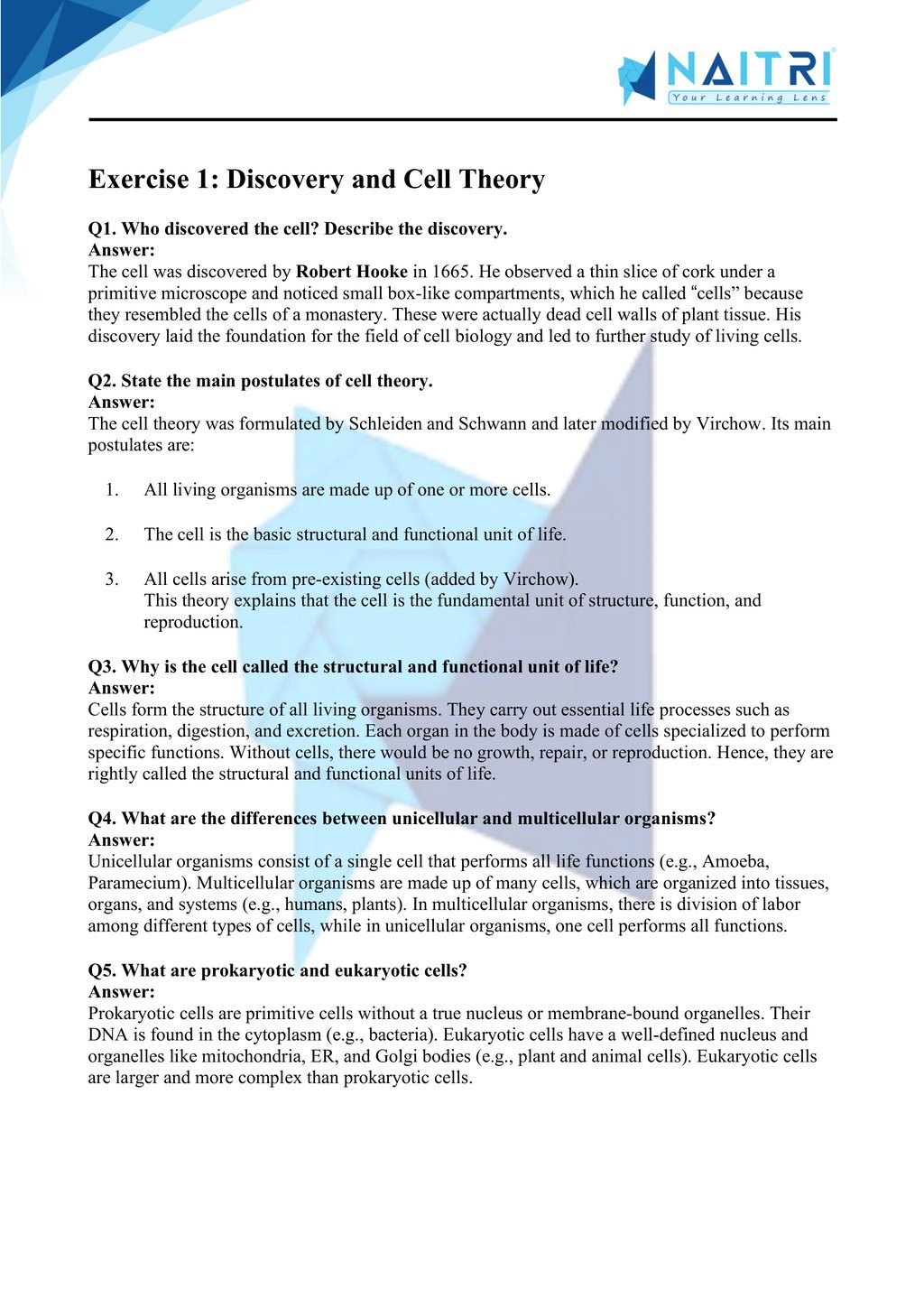
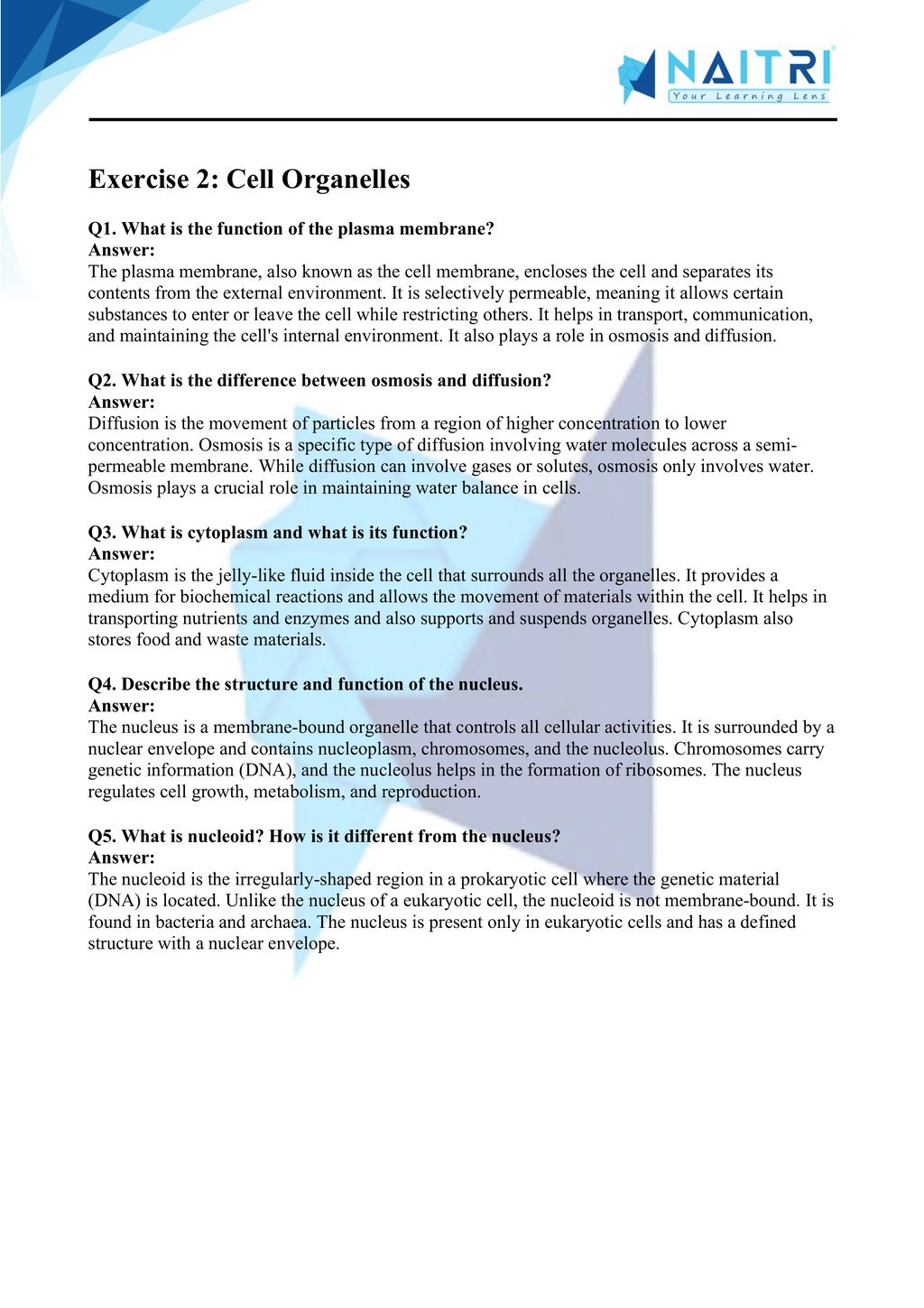
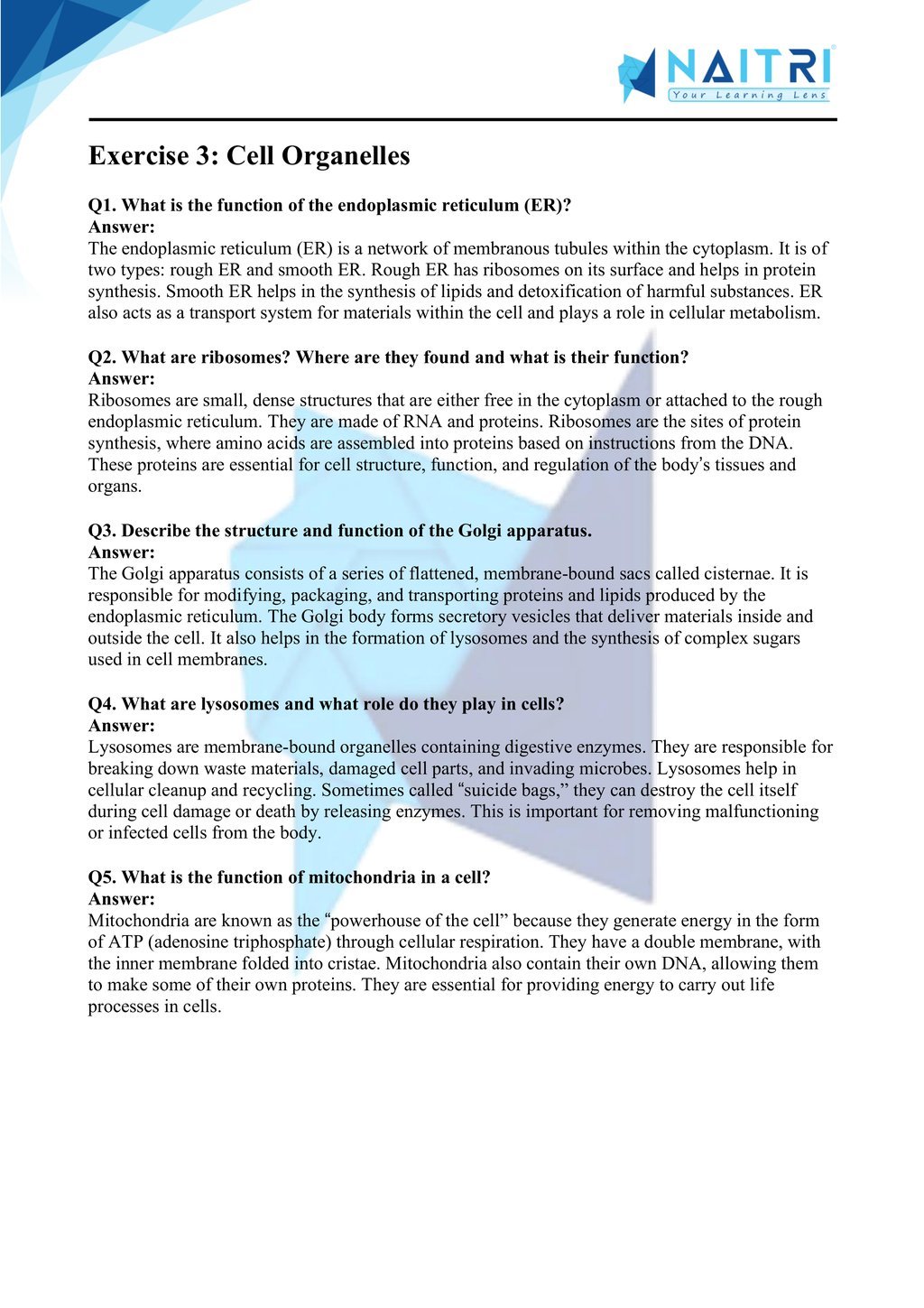
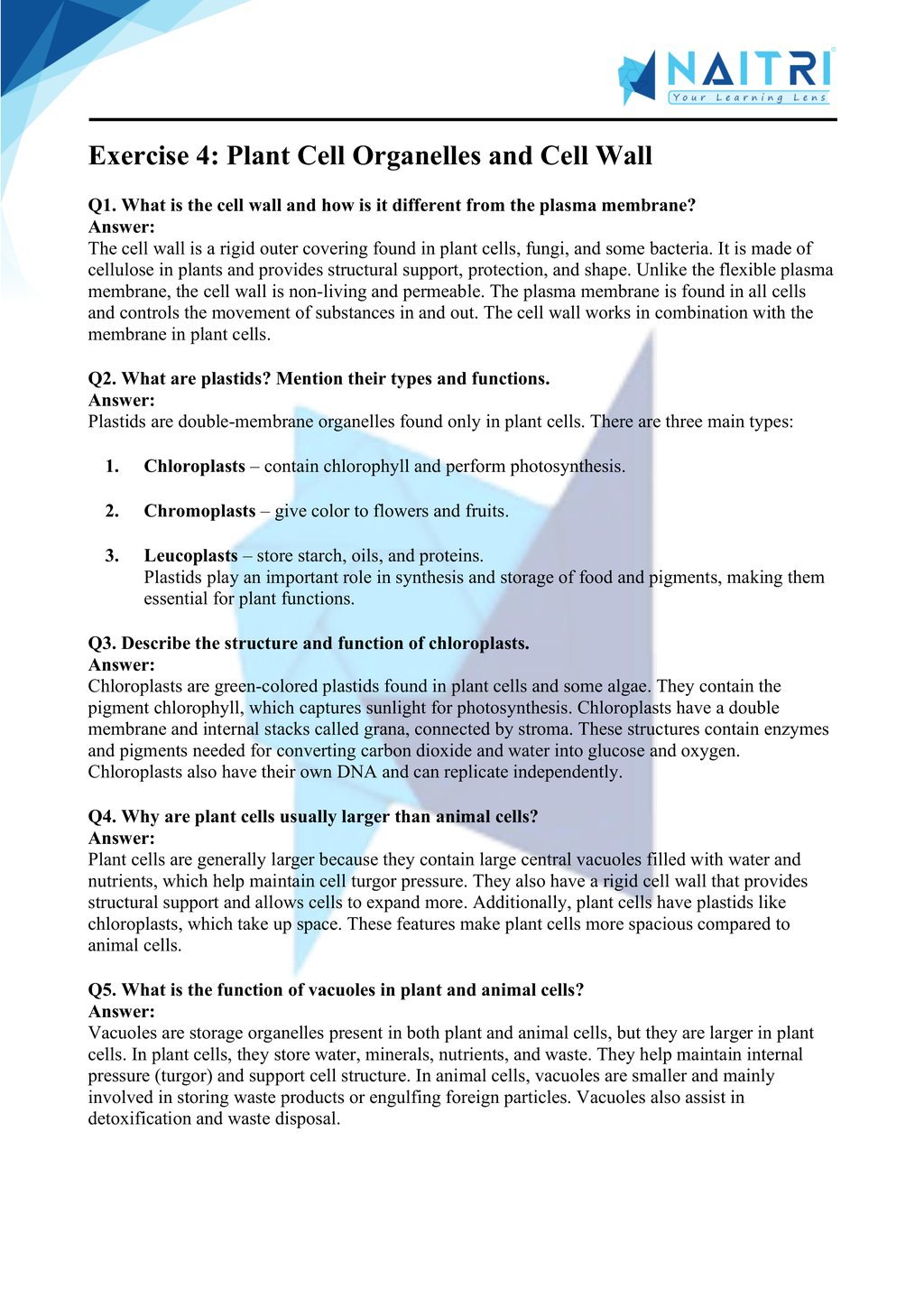
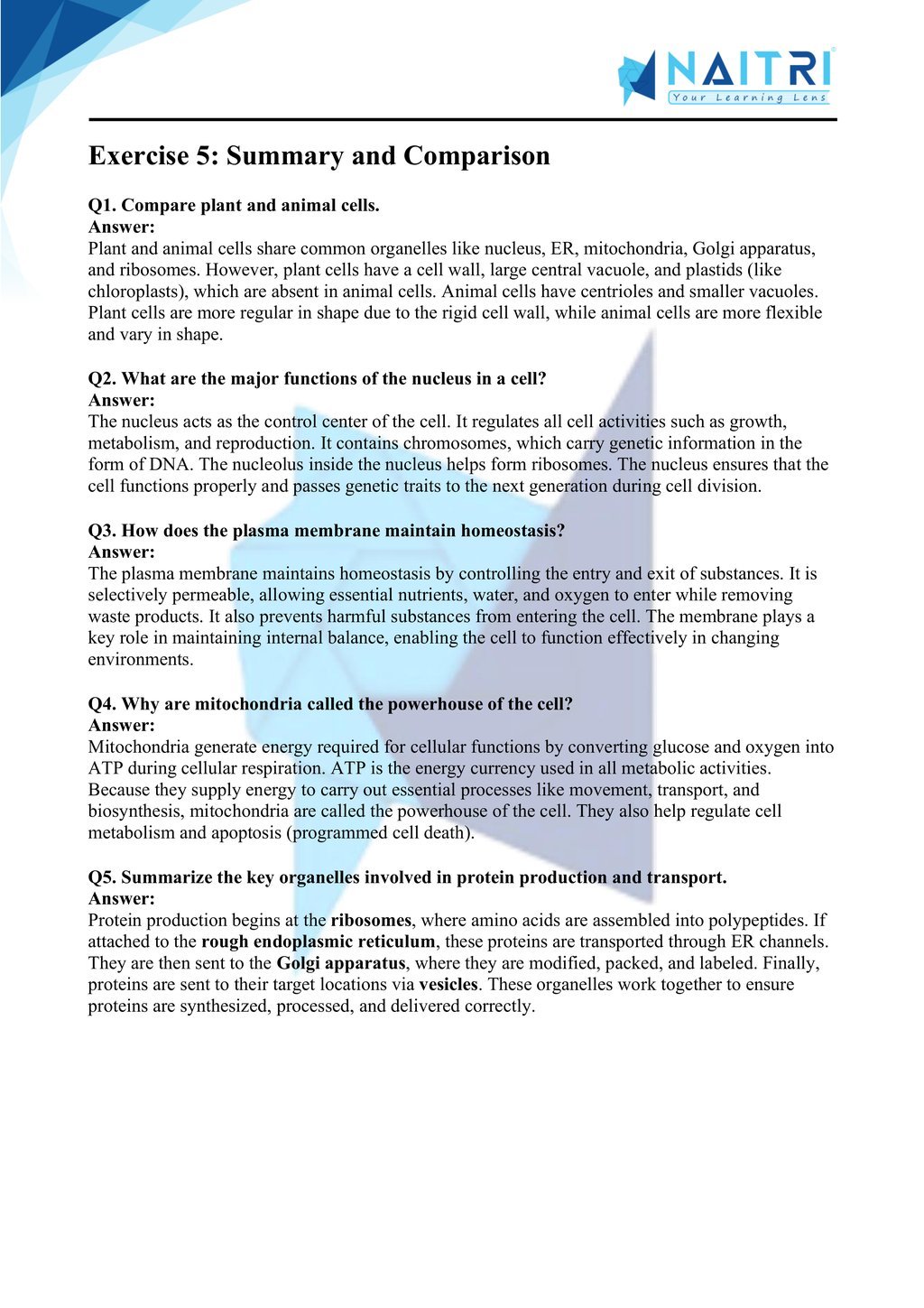
Experience Science Like Never Before – With AR!
Understanding The Fundamental Unit of Life is now more exciting and immersive! With the NAITRI App, you can explore complex science concepts through Augmented Reality (AR). Zoom into cells, interact with organelles, and see life’s building blocks in action — right in front of you. Our AR-powered lessons make learning interactive, 3D, and fun, helping you retain concepts better and enjoy every topic.



Visualize . Interact . Understand . The future of learning is here
The Fundamental Unit of Life – Important Questions with Answers
1. Who discovered the cell?
Answer: Robert Hooke in 1665.
2. Define cell.
Answer: Basic structural and functional unit of life.
3. Smallest and largest cells.
Answer: Smallest – Mycoplasma; Largest – Ostrich egg.
4. Difference between prokaryotic and eukaryotic cells.
Answer: Prokaryotes lack nucleus and organelles; eukaryotes have both.
5. Define plasma membrane.
Answer: Semi-permeable boundary controlling substance entry/exit.
6. What is cytoplasm?
Answer: Jelly-like fluid housing organelles.
7. State osmosis.
Answer: Movement of water from low solute to high solute across membrane via semipermeable membrane.
8. List types of tonicity.
Answer: Hypotonic, hypertonic, and isotonic solutions.
9. Function of nucleus.
Answer: Stores genetic material; controls cell activities.
10. Function of mitochondria.
Answer: Site of ATP production and energy release.
11. Role of ribosomes.
Answer: Synthesize proteins.
12. Function of Golgi apparatus.
Answer: Modifies, sorts, packages molecules for transport.
13. Differentiate rough and smooth ER.
Answer: Rough ER has ribosomes; smooth ER does not and synthesizes lipids.
14. Purpose of lysosomes.
Answer: Digest waste and worn-out organelles.
15. Define vacuole.
Answer: Fluid-filled sac for storage (large in plant cells).
16. What are plastids?
Answer: Plant organelles (chloroplasts, leucoplasts, chromoplasts).
17. Function of chloroplast.
Answer: Conducts photosynthesis and contains chlorophyll.
18. Cell wall’s role.
Answer: Rigid layer protecting plant cells, maintaining shape.
19. Key differences between plant and animal cells.
Answer: Plant cells have cell wall and chloroplasts; animal cells don’t.
20. Define ATP.
Answer: Energy currency of cells.
21. What is semi-permeable membrane?
Answer: Allows passage of some molecules, blocks others.
22. Why do plant vacuoles maintain turgor?
Answer: Large vacuoles retain water for rigidity.
23. How do cells maintain homeostasis?
Answer: Through selective transport, removal of waste, and balancing water/nutrients.
24. State one function of cytoskeleton.
Answer: Maintains cell shape and enables movement.
25. Why are lysosomes called “suicide bags”?
Answer: They contain enzymes that can digest entire cells if not contained.
Tissues builds on the concept of cells, showing how groups of cells form tissues to perform specific functions. The chapter introduces plant tissues (like xylem and phloem) and animal tissues (such as epithelial and muscle tissue). It highlights how specialized cells work together in both plants and animals, aiding understanding of body functions and crop structure—knowledge directly useful in MP’s agriculture and healthcare sectors.
Related Chapters You May Like
Download Naitri App
Easy, Visual Learning — Right on Your Phone
Learn with Augmented Reality! The Naitri app makes CBSE and MP Board concepts interactive and fun — even in low-resource settings. Watch lessons, complete homework, take tests, and track progress — all in one place. Anytime. Anywhere.
Available on








